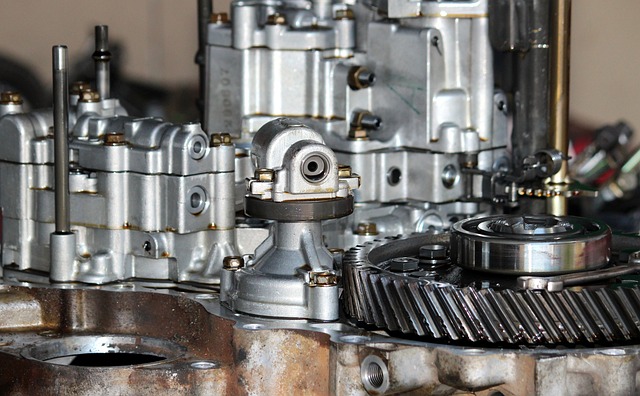Transmission-basics
Telecommunication signals are transmitted by line or wireless system. The line transmission system comprise electrical conducting medium or optical fiber and electronics devices for transmitting electrical signals into high waves.Transmission Basics
Wireless 🛜 Or Radio System
In wireless or radio systems, the signals are carried by the electromagnetic waves in the space between the transmitter and receiver. The distance between the transmitting and the receiving location causes spreading, resulting in diminishing of the transmitted power.
For satisfactory detection at the receiving end, a certain level of signal power is necessary and depending upon this and the loss of the interventing medium, the power of the transmitter is determined.
Long Routes
On long routes, repeaters are necessary, which regenerate or amplify the signal at the desired level. The transmitter with the required output power is used, as the expensive power may cause interference with other similar links in the vicinity due to electromagnetic induction. The interference level is dependent on the physical separation between the disturbing and the disturbed circuit in case of line communication and the frequency of operation is the dominant factor in radio communication.
Transmission by line.
In main type of transmission line,
The simplest agreement of transmitting electric power between any two points on earth is connecting them by an insulated conductor and using earth as return path.
Such a system will fairly work for carrying DC or low-frequency AC power. A single iron wire and earth return circuit was extensively used for transmission of telegraph signals (DC pulses) in past. The associated electromagnetic field (along with around the conductor) caused radiation of power with increase of frequency. The open wire line is also exposed to electromagnetic induction from the neighboring AC power lines.
The single conductor earth return transmission system was not suitable for telephony where the speech frequency was to be transmitted and the interference caused by the induction along the transmission path was undesirable.
Figure
A better agreement was to be used two insulated conductors for speech transmission. As the current in the two conductors was equal and opposite in direction, the resultant electromagnetic field along the path was reduced.
The net induction from outside source was also diminishned.
Similarly, distance between the conductors result in more effective cancellation of the electromagnetic field. The actual distance however determined by particle considerations. In case of open wire line supported by insulators on poles, the distance between the wire depends on the expected swing of wire (erected with a specific tension) with the wind.
Figure
A concentric conductor transmission line comprises a center conductor and a circular conducting tube. The two conductors are separated by dielectric medium. The electromagnetic field is mainly confined in the space between the conductor and there is minimum radiation. The induction from external source is mostly eliminated. This is called Coaxial line.
Figure 4.2
The type of line with two conductors at equal height called blanched line.
Figure 4.3
Coaxial (unbalanced) line
The single conductor returns or the coaxial line called unbalanced line.
Parallel wire (balanced) line
Cross Talk Between Transmission Lines
When two or more balanced lines erected for operation on the same poles, the transmission of speech frequencies current causes mutual induction called “Cross Talk in them”
Figure 4.4
In case of two balanced open wire lines this cross talk can be minimize by changing position of wire for half the length on One of the lines. The equal exposure to the two wires of the other line other line thus achieved. This method called “Transposition”
For large number of pairs on one alignment of poles complex transmission schemes adopted.
Figure 4.5
As large number of open wire lines could not carried on pole lines, particularly in urban areas, therefore multi-pair cables generally laid underground or in special cases erected on pole To reduce crosstalk in cables, the two wires of a pair twisted along the whole length. Various lengths of twists adopted for different pairs. Another arrangement of reducing crosstalk to keep the wire of two pairs at right angle to each other. This type of cable called “Quad Cable” and used for providing junction circuits between telephone exchange. The twin wire pair type cables used for connecting subscriber with exchange.
Figure 4.6
Additional circuits,
A special system devised to provide additional one circuit of the two pairs. The neutral (central) position of the two lines used to drive the third circuit. This called phontom circuit.
Phantom circuit.
Phantom circuit. Three circuits on two pairs of wires.
Figure 4.7
Balancing of Cable Capacitance
Multi-pair telephone cables have high capacitance between the wires. This has two effects. Any unbalance in the capacitance between conductors of adjacent pair gives rise to cross-talk. While joining the two lengths of the cable, this unbalance tried to minimized. In order to achieve this, measurements taken of the prevailing unbalance.
Figure 4.8
If necessary capacitors also inserted. This called “Balancing.”
Improving performance by reducing losses of cables
Another problem with high capacitance of cable pairs is extra losses in transmission due to shutting effect. As known that capacitors and inductors have opposite effects in circuit. Therefore, inductance coils inserted at intervals (S) along the cable route to neutralize the distributed capacitance for reducing losses. This technique called “Cable Loading.”
4.9 figure
Multiple channels on one lin
In order to provide more circuit on a single pair of wires, a number of speech channels modulated with different frequencies and grouped to form a continuous band to transmitted on the line as “Carrier.”
At the receiver end, the band demodulated in the reverse manner in order to produce various speech channels.
4.10
speech Carrier
This was basically Frequency Deviant Multiplexing, FDM. There exclusive radiation at higher frequencies from the open wire lines and as such a limited of 150 kHz imposed. Initially, 3 channels developed, followed by exclusive use of 12-Channel Carrier System.
An open-line wire could thus yield one physical and (3+12), fifteen carrier channels. Each line from the customer (2 wire ) split for transmission (2 wire) and receiver (2 wire) direction by a device called “Hybrids” installation in the carrier equipment.
4.11
Hybrid changing 2 to 4 wires. Two way to / from receiver 📞 and transmit directions.
By using different group of frequencies in the two directions the some transmission medium 🔉 could used for both may communication.
4.12 figure
As mentioned earlier, radiation from Coaxial Cables was very low. Therefore, using the FDM system, large number of channels were possible. Generally, two coaxial tubes used, one in each direction. The losses in transmission compensated by amplifier at specified distance. The electric power to the intermediate amplifiers between terminal stations was provided through the inner conductor of the two coaxial tubes. These intermediate positions called Repeater Station. Generally the cable and the repeaters buried in the ground.













